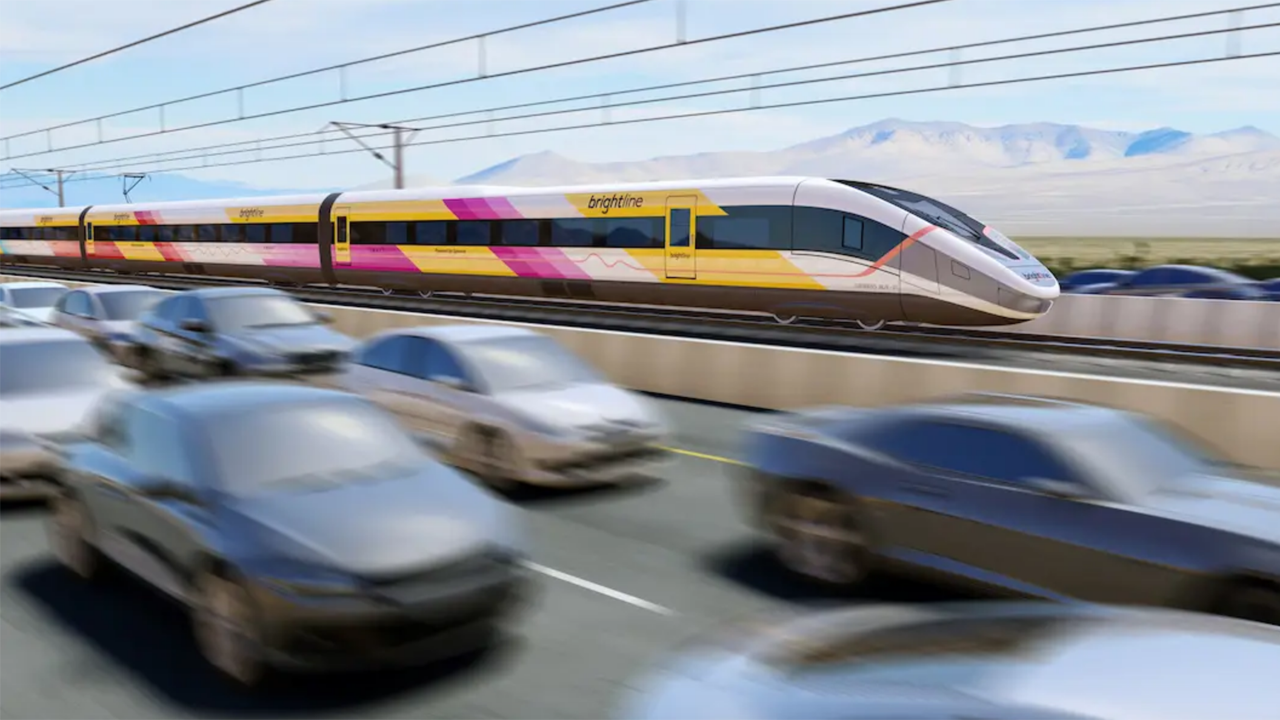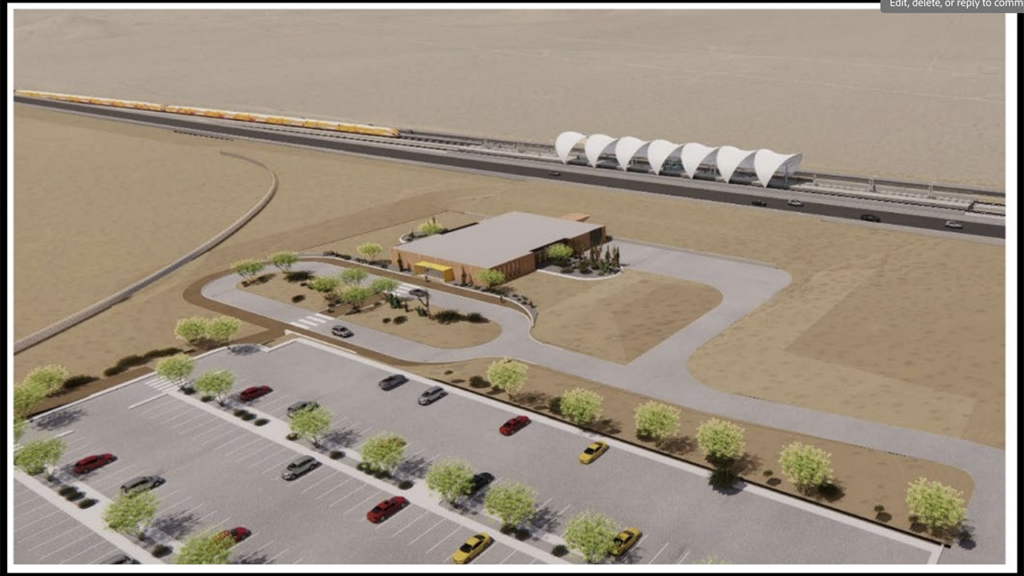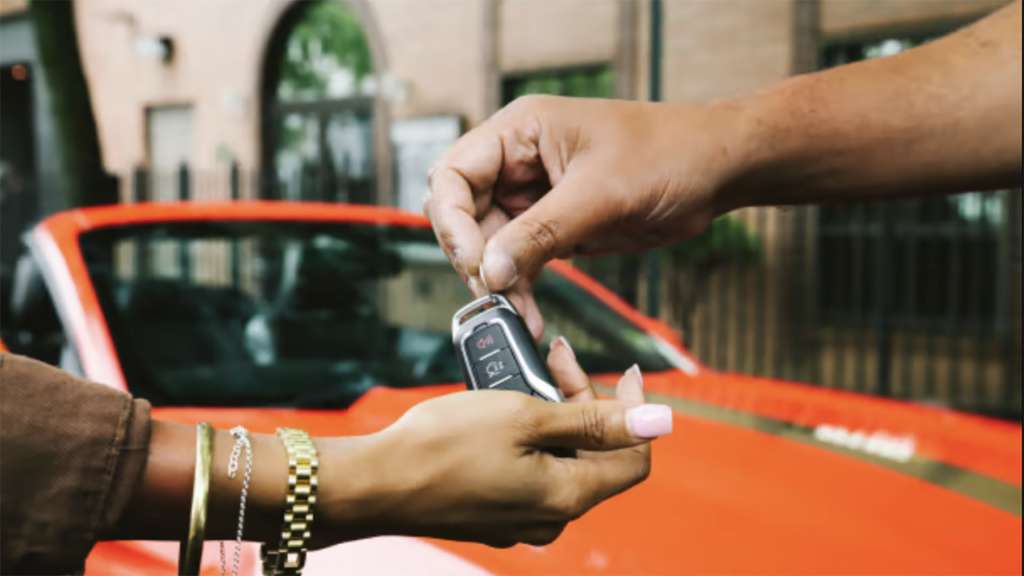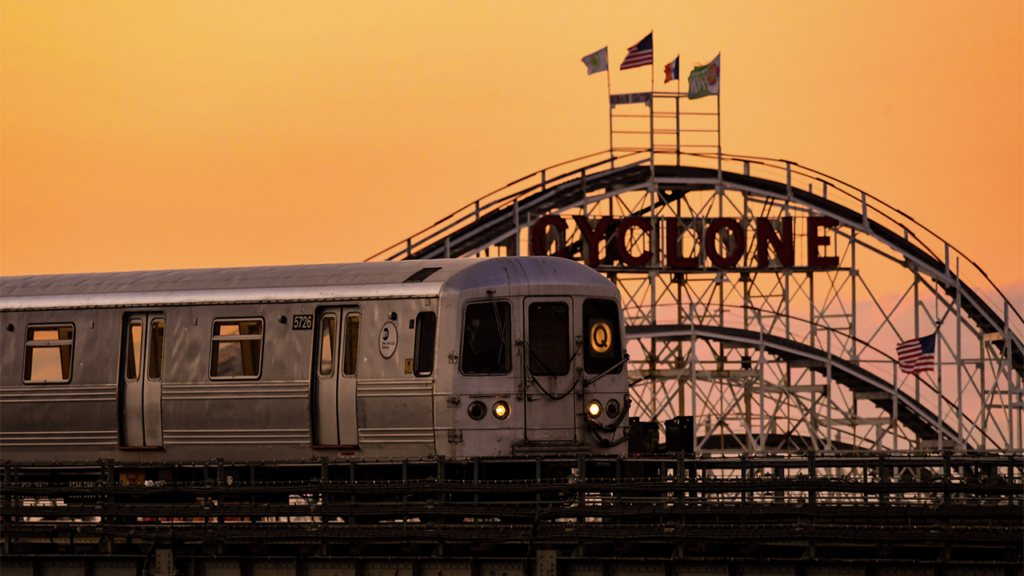
Transit Briefs: Amtrak, Brightline West, Metrolinx, NYMTA
Written by Marybeth Luczak, Executive Editor
The environmental review and permitting process for the planned Victor Valley-to-Rancho Cucamonga, Calif. segment of Brightline West’s Las Vegas-to-Southern California high-speed rail project is complete, the Las Vegas Review Journal reported July 14.
Idaho and Utah are seeking to revive Amtrak service between Salt Lake City and Boise. Also, Brightline West’s planned Las Vegas-to Southern California high-speed rail project advances; Metrolinx teams with Turo car-sharing in the Greater Toronto and Hamilton Area; and subway and bus workers in TWU Local 100 ratify their contract with the New York Metropolitan Transportation Authority (MTA), and an MTA survey shows increased satisfaction for subway, bus and paratransit riders.
The Idaho State Journal on July 12 reported that the cities of Boise and Salt Lake City are working together to reinstate Amtrak service between them. The Pioneer ran from Seattle to Chicago via Portland, Boise, Salt Lake City and Denver until 1997.
Bri Brush, the mayor of Boise’s transportation advisor, told the newspaper that the cities and local communities applied in March for a grant from the Federal Rail Administration’s Corridor Identification and Development Program to study the possible route. An answer is anticipated in September, she said.
If the grant is awarded, the Idaho Transportation Department and the Utah Department of Transportation would partner on the project’s ”next steps,” UDOT spokesman John Gleeson told The Idaho State Journal. “He said the grant would allow Idaho and Utah to study if the route would be feasible and if it would make sense as an option for transportation in the region,” according to the newspaper. “While the Idaho Transportation Department would take the lead on the stretch of line from Salt Lake City to Boise, Gleeson said the Utah Department of Transportation is leading a similar effort to secure passenger rail service from Las Vegas to Salt Lake City.”
Bri Brush told the newspaper that FRA “received more than 70 similar applications for renewed passenger rail service from other areas across the country,” but the Pioneer route “has a head start over some of those applications” because the tracks still exist.
Further Reading:
Amtrak Applies for FRA Grants to Upgrade Long-Distance Network, NEC Infrastructure

The environmental review and permitting process for the planned Victor Valley-to-Rancho Cucamonga, Calif. segment of Brightline West’s Las Vegas-to-Southern California high-speed rail project is complete, the Las Vegas Review Journal reported July 14. “In that, the Federal Railroad Administration found no significant environmental impacts for the planned 49-mile line,” according to the newspaper.
“‘The FRA’s Finding of No Significant Impact confirms the environmental benefits of the project extending into Greater Los Angeles at Rancho Cucamonga,’ Sarah Watterson, president of Brightline West, said in a statement,” the newspaper reported. “‘Having permits and right of way are typically the highest barriers to success for large scale infrastructure developments, and Brightline West’s tremendous progress here signifies why we are moving towards a ground-break later this year.’”
The full 218-mile, $12 billion project is slated to be built within Interstate 15 right-of-way and to offer stations near the iconic Las Vegas Strip and in Rancho Cucamonga, Apple Valley and Hesperia, Calif. Trains would be capable of speeds of up to 200 miles per hour.
The Las Vegas Review Journal reported that the “environmental assessment for the Las Vegas-to-Apple Valley portion was approved in 2011 and reviewed in 2020.”
Last month, the U.S. Department of Transportation (USDOT) awarded a $25 million RAISE (Rebuilding American Infrastructure with Sustainability and Equity) program grant to the San Bernardino County Transportation Authority to fund the final design and construction of two Brightline West stations and associated facilities in Hesperia and Victor Valley. Also, in April the Nevada Department of Transportation in coordination with Brightline West applied for $3.75 billion from the Federal-State Partnership for Intercity Passenger Rail Grant Program.
“Whatever money is awarded [from the Federal-State Partnership for Intercity Passenger Rail Grant Program] would go toward the construction of the rail line, with the remainder of the costs to be paid for via tax-exempt private activity bond allocation from both Nevada and California and private capital,” according to the Las Vegas Review Journal.
In related developments, Brightline West on Feb. 21 reported signing a memorandum of understanding with the High-Speed Rail Labor Coalition, establishing a commitment “for the use of highly skilled union labor in critical jobs required to operate and maintain” its high-speed rail project. Earlier in February, Brightline West entered into an agreement with the California Department of Transportation and California Department of Fish and Wildlife to design and construct three wildlife overcrossings across Interstate 15 and its high-speed rail system.

Metrolinx on July 17 reported partnering with Turo, a Canadian car-sharing marketplace, to help riders extend their journeys beyond the GO Transit network.
Turo vehicles can now be delivered to GO stations; riders can choose the make and model, including an electric or hybrid, according to Metrolinx.
To request a vehicle, riders can either download the Turo app, available from the Apple App Store and Google Play Store, or book on Turo’s website. According to Metrolinx, they simply type in their nearest GO station as well as their travel date to browse thousands of cars shared by local hosts. When it’s time to pick up their car, they can check in with the app and get the keys from the host. Turo vehicles will only be parked in GO station lots for a maximum of 48 consecutive hours once a car reservation request is received, Metrolinx reported.

The New York Daily News on July 17 reported that subway and bus workers in TWU Local 100 have ratified their contract with the New York MTA. A tentative agreement was announced in June. The 40,000 workers represented will receive raises of 3% in the contract’s first year, 3% in the second year, and 3.5% in the third and final year, plus each worker will take home a $4,000 pay bonus, according to the newspaper.
“The bonus comes after the union demanded hazard pay from the worst of the COVID-19 pandemic,” the Daily News said. “The MTA branded the one-time bump as an ‘essential worker’ bonus. The contract also keeps health contributions stable, extends medical coverage to the dependents of members who died of COVID and gives workers 12 weeks’ paid maternity leave and four weeks’ paid paternity leave.”
In a statement to the paper, MTA New York City Transit President Richard Davey said he was “pleased” with the ratification, and that “[t]ransit workers deserve a raise and other negotiated benefits.”
The MTA Board is expected to sign off on the contract July 19.
Separately, New York MTA on July 17 announced the results of the Spring 2023 Customers Count Survey (see above). “Overall satisfaction continues to steadily increase from spring 2022, with subway, bus and paratransit riders all reporting higher satisfaction rates in the spring 2023 survey compared to last spring’s results with express bus riders leading the way with a 79% satisfaction rate,” according to MTA.
Subway service overall increased two percentage points, including a 3% improvement in personal safety and security, MTA reported. Satisfaction among subway lines improved across most lines, with the Q, L and 7 ranking among the top three, the agency noted; all three lines were among the top four in fall 2022. The Q line showed the greatest improvement with a four-percentage point jump to 64% since the fall 2022 survey.
According to the spring 2023 survey, subway riders who travel to and from stations that now feature a Customer Service Center reported higher satisfaction, with Myrtle-Wyckoff Avenues L and M station users seeing the greatest increase from the fall 2022 survey, rising 10 percentage points to 71%. Increased satisfaction was also reported by subway riders who benefit from station upgrades—through the Station Re-NEW-vation Program launched last fall—with overall satisfaction increasing from 59% to 61%, the agency reported.
The Vernon Blvd-Jackson Avenue 7 subway station is a recently “re-new-vated” station with the highest satisfaction rating: 76%. The DeKalb Avenue L station showed the greatest improved satisfaction, rising from 61% in the fall 2022 survey to 68% in the spring 2023 survey.
“Increasing the satisfaction of our subway, bus and paratransit customers is the North Star of NYC Transit, and these survey results show that we are making progress towards our goal of 70% satisfaction by 2024,” Richard Davey said. “We are especially pleased to see customer satisfaction increase among riders who use stations with new Customer Service Centers or those that have been beautified through our Station Re-NEW-Vation Program. This is a new era of customer service at NYC Transit, and as we continue to push for faster, cleaner and safer service in the months to come, we look forward to continued improvements in customer satisfaction.”



